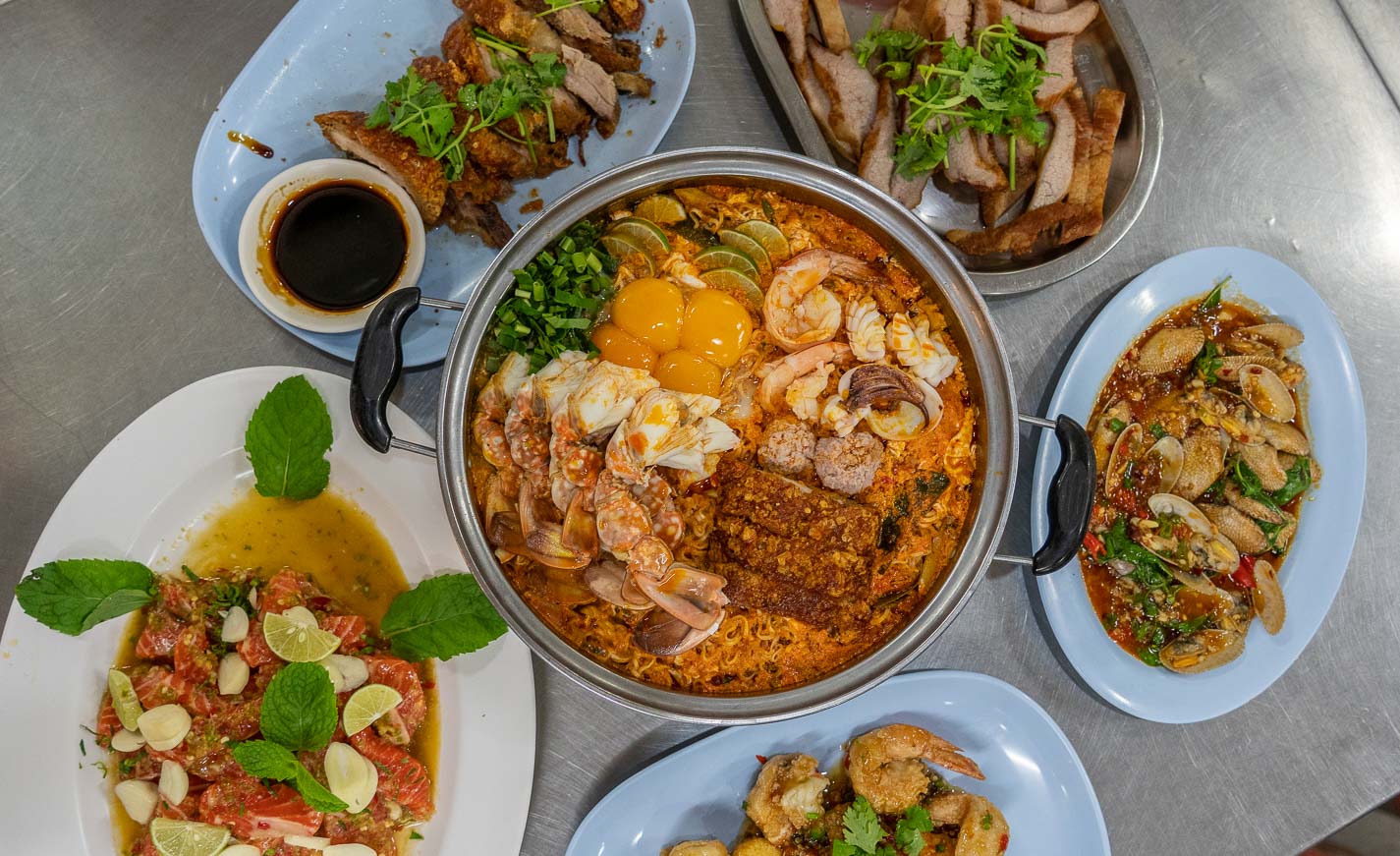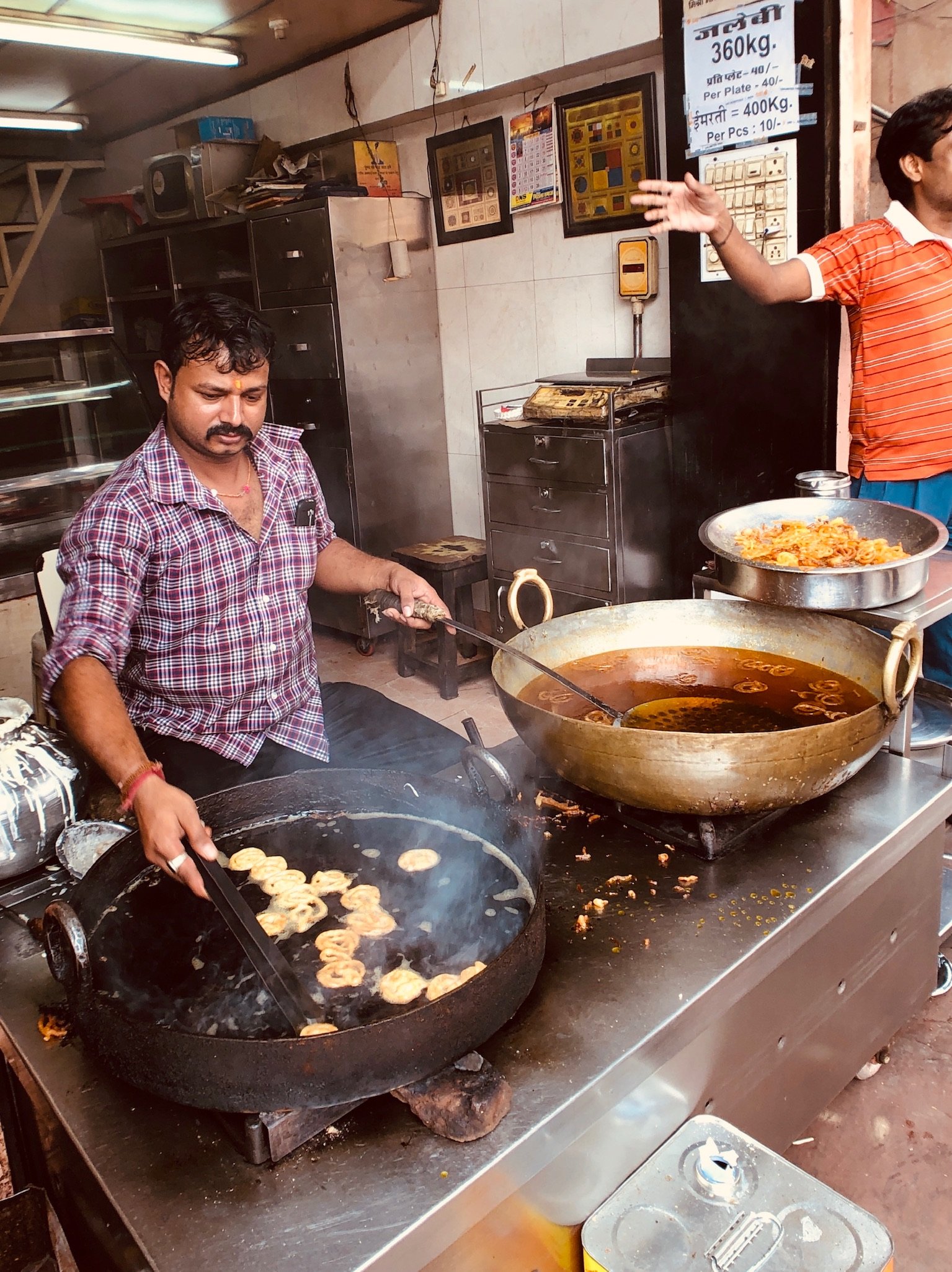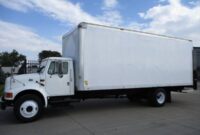Food Truck Water Tanks: The Unseen Foundation of a Thriving Mobile Kitchen pickup.truckstrend.com
In the bustling world of food trucks, where culinary creativity meets on-the-go convenience, the spotlight often falls on sizzling grills, innovative menus, and eye-catching wraps. Yet, beneath the vibrant exterior and delicious aromas lies a critical, often overlooked, component: the water tank system. Far from being mere containers, food truck water tanks are the lifeblood of a hygienic, compliant, and ultimately successful mobile kitchen. They are the silent workhorses that enable everything from handwashing and dish sanitization to ingredient preparation, directly impacting food safety, operational efficiency, and customer trust.
A food truck’s water system typically comprises two distinct but interconnected components: the freshwater (or potable water) tank and the greywater (or wastewater) tank. Understanding their function, proper sizing, installation, and maintenance is not just good practice—it’s a legal imperative and a cornerstone of long-term success in the mobile food industry. This comprehensive guide will delve into every facet of food truck water tanks, equipping you with the knowledge to build and maintain a robust, compliant, and efficient water system for your culinary venture.
Food Truck Water Tanks: The Unseen Foundation of a Thriving Mobile Kitchen
The Unsung Heroes: Why Water Tanks Are Non-Negotiable for Food Trucks
The importance of a robust water tank system in a food truck cannot be overstated. It underpins several critical aspects of your operation:
- Health and Safety Compliance: This is paramount. Local and state health departments, guided by the FDA Food Code, mandate specific requirements for potable water supply and wastewater disposal. Adequate water ensures proper handwashing facilities for staff, crucial for preventing cross-contamination. It also facilitates the sanitization of dishes, utensils, and food preparation surfaces, minimizing the risk of foodborne illnesses. Non-compliance can lead to fines, operational shutdowns, and severe damage to your reputation.
- Operational Efficiency: Imagine trying to prepare food or clean without running water. Water tanks provide the necessary supply for various tasks, including rinsing produce, thawing ingredients, operating coffee machines, and maintaining a clean work environment. A well-designed system ensures a steady flow, preventing disruptions and keeping your service running smoothly, even in remote locations without direct water hookups.
- Customer Trust and Reputation: In the food industry, cleanliness is next to godliness. Customers expect a clean operation, and visible signs of good hygiene, such as accessible handwashing stations, contribute significantly to their confidence in your brand. A reliable water system directly supports this perception, enhancing your truck’s image and fostering repeat business.
- Mobility and Self-Sufficiency: The very essence of a food truck is its mobility. Water tanks grant your operation independence from fixed water sources, allowing you to set up shop at festivals, events, and diverse locations where traditional plumbing isn’t available. This self-sufficiency is a core competitive advantage.

Types of Food Truck Water Tanks: Fresh vs. Greywater
The two primary types of water tanks serve distinct purposes and have specific requirements:
Freshwater Tanks (Potable Water)

These tanks store clean, potable (drinkable) water for all your food preparation, handwashing, and cleaning needs.
- Material: Must be made from food-grade, NSF-approved materials, typically virgin polyethylene plastic. Stainless steel is also an option but is much heavier and more expensive. The material must not leach chemicals into the water or promote bacterial growth.
- Features: Freshwater tanks typically have a large inlet for filling, a smaller outlet for connecting to the water pump, and a vent to prevent vacuum locks during water draw and allow air to escape during filling.
- Capacity Considerations: Sizing is crucial and often dictated by local health codes. Common capacities range from 20 to 100 gallons, depending on the truck’s size, menu, and anticipated daily water usage. Health departments often specify minimum capacities, such as 30 gallons for freshwater.

Greywater Tanks (Wastewater)
These tanks are designed to collect all wastewater generated from your sinks (handwashing, prep sink, 3-compartment sink) and any other water-using equipment.
- Material: While not required to be food-grade, they are often made from similar polyethylene materials for durability and chemical resistance.
- Features: Greywater tanks have inlets from all drain lines, an outlet for draining the wastewater, and a vent to prevent airlocks and ensure smooth drainage.
- Capacity Considerations: This is a critical regulatory point. Greywater tanks must always be larger than your freshwater tank, typically by at least 15% to 50% (e.g., 1.5 times the freshwater capacity). This overflow capacity is essential to prevent wastewater spills if your freshwater tank is completely emptied and refilled multiple times without emptying the greywater. For a 30-gallon freshwater tank, a 45-gallon greywater tank is a common minimum requirement.
Blackwater (Distinction)
It’s important to note that "blackwater" refers to wastewater from toilets. While common in RVs, food trucks typically do not have onboard toilets, so blackwater tanks are generally not relevant for their water systems.
Key Considerations When Choosing Your Water Tanks
Selecting the right water tanks involves more than just picking a size. Here’s what to consider:
- Material: Food-grade polyethylene (NSF-certified) is the standard due to its lightweight nature, durability, cost-effectiveness, and resistance to corrosion. Stainless steel is an alternative, offering superior durability but at a higher cost and weight.
- Capacity: Carefully calculate your estimated daily water consumption based on your menu, number of sinks, and operational hours. Then, cross-reference this with your local health department’s minimum capacity requirements. Always err on the side of slightly larger tanks, especially for greywater.
- Shape and Size: Tanks come in various shapes (rectangular, L-shaped, custom). Measure your available space precisely, considering under-truck mounting or interior placement. Optimize for space efficiency without compromising capacity.
- Mounting and Installation: Tanks must be securely mounted to prevent shifting during transit. Ensure they are accessible for filling, draining, and cleaning. Freshwater tanks are typically mounted above the water pump for gravity assistance, while greywater tanks are placed below all drain outlets.
- Ventilation: Both freshwater and greywater tanks require proper venting. Freshwater tanks need a vent to allow air in as water is drawn out (preventing a vacuum lock) and air out during filling. Greywater tanks need a vent to allow wastewater to flow freely and prevent gurgling or slow drainage. Air gaps are also crucial at all sink drains to prevent backflow contamination.
- Drainage: The greywater tank must have an easily accessible and compliant drainage point, typically a ball valve, for proper disposal at an approved wastewater facility.
Installation and Plumbing Essentials
A well-designed plumbing system is just as crucial as the tanks themselves.
- Water Pump System: A 12V DC diaphragm pump (e.g., Shurflo, Flojet) is standard for food trucks. It draws water from the freshwater tank and delivers it under pressure to your sinks and equipment. Choose a pump with adequate GPM (Gallons Per Minute) and PSI (Pounds per Square Inch) for your needs.
- Water Heater: Health codes typically mandate hot water for handwashing and dish sanitization (often 110-120°F minimum). On-demand (tankless) electric or propane water heaters are popular for their compact size and energy efficiency. Small tank-style heaters are also an option.
- Filtration: An inline sediment filter at the freshwater tank inlet is recommended to prevent debris from entering your system. A carbon filter can be added downstream for improved water taste and odor.
- Hoses and Fittings: All plumbing components that come into contact with potable water must be NSF-approved. Use durable, flexible hoses (PEX or reinforced PVC) and secure, leak-proof fittings.
- Venting and Air Gaps: As mentioned, proper venting for tanks is vital. Additionally, an air gap (a physical separation between the water outlet and the flood level of a fixture, like a sink) is required by health codes to prevent backflow contamination from drains into the potable water supply.
- System Design: Plan your layout carefully. The freshwater tank is typically positioned higher than the pump for better flow, and the greywater tank must be lower than all drain outlets to allow gravity to do its work.
Maintenance, Cleaning, and Troubleshooting
Regular maintenance ensures the longevity and safe operation of your water system.
- Regular Cleaning:
- Freshwater Tank: Sanitize every few months or as needed. Drain completely, fill with a diluted bleach solution (e.g., 1/4 cup bleach per 15 gallons of water), let it sit for a few hours, then drain and flush thoroughly with clean water multiple times until the bleach smell is gone.
- Greywater Tank: Drain daily, or after every shift. Flush with clean water to prevent buildup of food particles and grease, which can lead to odors and blockages.
- Draining and Flushing: Never let wastewater sit in the greywater tank for extended periods. Dispose of it at an approved facility (e.g., RV dump station, designated wastewater disposal site).
- Winterization: If operating in cold climates, drain all water from tanks, pumps, and lines to prevent freezing and bursting pipes during winter months. RV antifreeze (non-toxic) can be used in the system for added protection.
- Leak Checks: Regularly inspect all hoses, connections, and fittings for leaks. Address any drips immediately to prevent water damage and potential health code violations.
- Troubleshooting:
- Low Water Pressure: Check water levels, pump operation, filter clogs, or kinks in hoses.
- Pump Not Working: Check power supply, fuse, pressure switch, or pump motor.
- Bad Odor from Drains/Greywater: Indicates buildup; thorough cleaning and flushing are needed.
Navigating Regulations and Compliance
Compliance with local health department regulations is non-negotiable for food truck operation.
- Local Health Department: This is your primary authority. Requirements can vary significantly by city and county. Before designing or purchasing any part of your water system, consult your local health department for their specific guidelines, minimum tank capacities, required water temperatures, and approved materials.
- FDA Food Code: While not directly enforceable by the FDA, the Food Code provides science-based guidelines that state and local authorities adopt. It covers general principles for potable water and wastewater management.
- NSF Certification: Look for NSF (National Sanitation Foundation) certification on tanks, pumps, and plumbing components. This ensures they meet public health standards for material safety and performance.
- Permitting Process: Your water system will be a key part of your food truck inspection during the permitting process. Ensure it’s built to code to avoid costly delays or modifications.
Practical Advice and Actionable Insights
- Oversize Your Greywater Tank: Always choose a greywater tank significantly larger than your freshwater tank (e.g., 1.5x to 2x capacity) to avoid overflows and comply with regulations.
- Invest in Quality Components: Skimping on water tanks, pumps, or plumbing can lead to frequent breakdowns, leaks, and health code violations. Quality components pay for themselves in reliability and peace of mind.
- Plan Your Layout Carefully: Before purchasing tanks, map out your entire truck’s interior and exterior. Consider where tanks will fit, how they will be filled and drained, and how plumbing lines will run efficiently.
- Regular Maintenance is Key: Proactive cleaning and checks prevent costly repairs and ensure continuous compliance.
- Know Your Local Codes: This cannot be stressed enough. What works in one county might not work in another. Get written confirmation from your health inspector on all water system requirements.
Food Truck Water Tanks: Estimated Price Guide
Please note that prices are estimates and can vary significantly based on brand, material, capacity, features, and supplier. This table provides a general range for budgeting purposes.
| Component Category | Description | Estimated Price Range (USD) | Notes |
|---|---|---|---|
| Freshwater Tank | Food-grade polyethylene, NSF-certified | $50 – $400 | Price varies by capacity (e.g., 20-100 gallons), shape (rectangular, L-shaped), and manufacturer. |
| Greywater Tank | Non-potable polyethylene | $50 – $400 | Price varies by capacity (e.g., 30-150 gallons), shape. Often same material as freshwater. |
| Water Pump | 12V DC diaphragm pump (e.g., Shurflo, Flojet) | $70 – $200 | Flow rate (GPM), pressure (PSI) are key factors. Look for automatic shut-off. |
| Water Heater | On-demand electric/propane or small tank-style | $150 – $500 | Capacity, heating method, brand. Propane is often more practical for mobile use. |
| Water Filtration | Inline sediment filter, carbon filter | $20 – $100 | Basic filters are inexpensive; advanced multi-stage systems cost more. |
| Hoses & Tubing | NSF-approved flexible tubing (PEX, reinforced PVC) | $50 – $200 | Varies by length and diameter. |
| Fittings & Valves | Connectors, clamps, check valves, drain valves | $50 – $150 | Brass, plastic, or stainless steel fittings. |
| Ventilation Kit | Tank vents, air gaps for sinks | $10 – $50 | Essential for proper flow and preventing backflow. |
| Pressure Regulator | For incoming city water if connecting temporarily | $20 – $50 | Protects your system from high pressure. |
| Full System Kit | Pre-packaged tank, pump, heater, basic fittings | $600 – $1500+ | Convenience but may require customization for specific truck layouts or regulations. |
| Installation Labor | Professional plumbing installation (if not DIY) | $300 – $1000+ | Highly variable based on complexity, location, and plumber’s rates. |
Frequently Asked Questions (FAQ)
Q1: How often do I need to refill my freshwater tank?
A1: This depends on your tank capacity and water usage. A typical food truck might need to refill daily or every other day. Monitor your water levels closely, especially during peak service.
Q2: How do I dispose of greywater?
A2: Greywater must be disposed of at an approved wastewater disposal facility, such as an RV dump station or a designated commercial wastewater facility. Never dump greywater onto the ground or into storm drains, as this is illegal and harmful to the environment.
Q3: What’s the difference between freshwater and greywater tanks?
A3: Freshwater tanks hold clean, potable water for use, while greywater tanks collect all wastewater generated from sinks and equipment. Greywater tanks must always be larger than freshwater tanks to accommodate all used water.
Q4: What material is best for food truck water tanks?
A4: Food-grade, NSF-certified polyethylene plastic is the most common and recommended material for both freshwater and greywater tanks due to its safety, durability, and cost-effectiveness.
Q5: Do I need a water heater for my food truck?
A5: Yes, nearly all health departments require a water heater to provide hot water for handwashing and dish sanitization, usually at a minimum temperature of 110-120°F.
Q6: What capacity tanks do I need for my food truck?
A6: The ideal capacity depends on your specific menu, operational volume, and local health department regulations. Always consult your local health department for minimum requirements. A common starting point is 30 gallons for freshwater and 45 gallons (or more) for greywater.
Q7: Can I use a regular garden hose for my food truck’s freshwater system?
A7: No, you should only use drinking water-safe (NSF-approved) hoses, typically marked as "potable water safe" or "RV/Marine hose." Regular garden hoses can contain lead or other chemicals that can leach into your drinking water.
Q8: How do I clean my water tanks effectively?
A8: For freshwater tanks, use a diluted bleach solution (e.g., 1/4 cup bleach per 15 gallons of water) or an RV-specific tank cleaner. Let it sit, then flush thoroughly multiple times. For greywater tanks, regular draining and flushing with clean water, along with occasional use of a mild degreaser, is sufficient.
Conclusion
Food truck water tanks, though often out of sight, are unequivocally the backbone of any successful mobile culinary operation. They are not merely storage units but integral components of a complex system that ensures food safety, enables efficient operations, and upholds your brand’s reputation for cleanliness. By understanding the nuances of freshwater and greywater tanks, investing in quality components, adhering to proper installation guidelines, and committing to diligent maintenance and regulatory compliance, food truck entrepreneurs can build a robust water system. This foundation of reliable and hygienic water will allow them to focus on what they do best: serving delicious food and delighting customers, wherever the road may lead.



